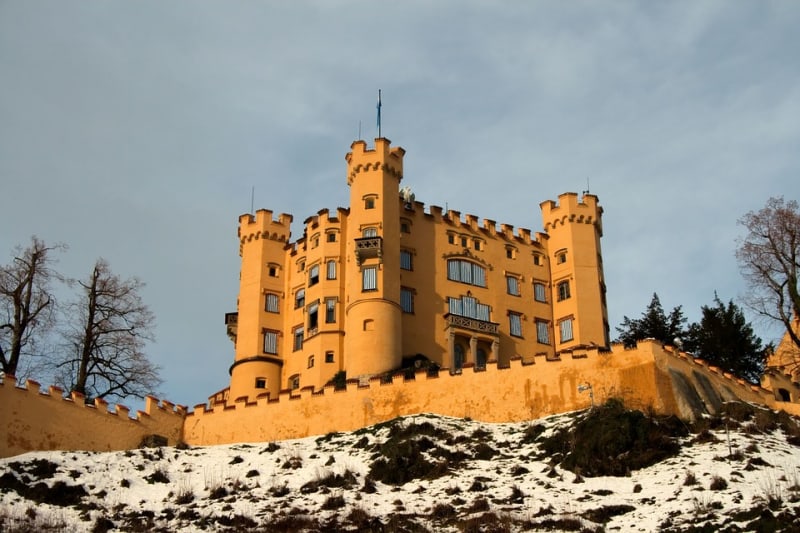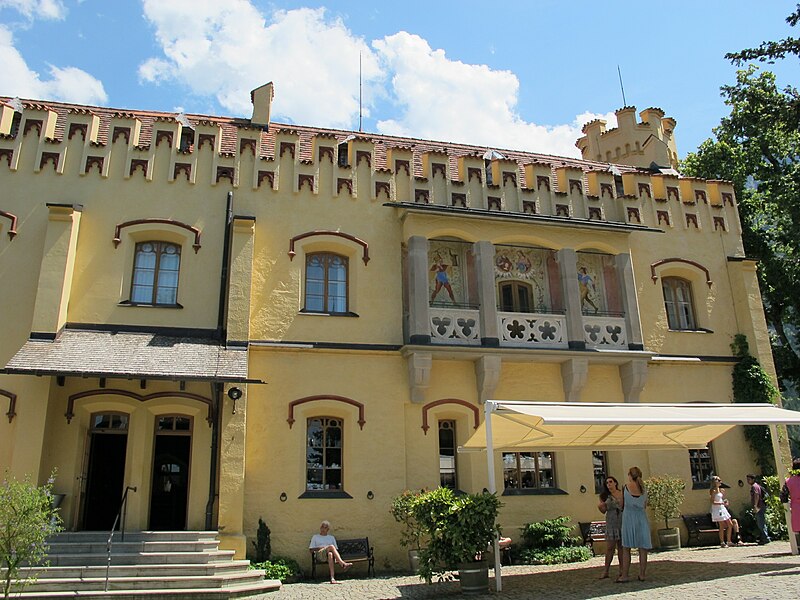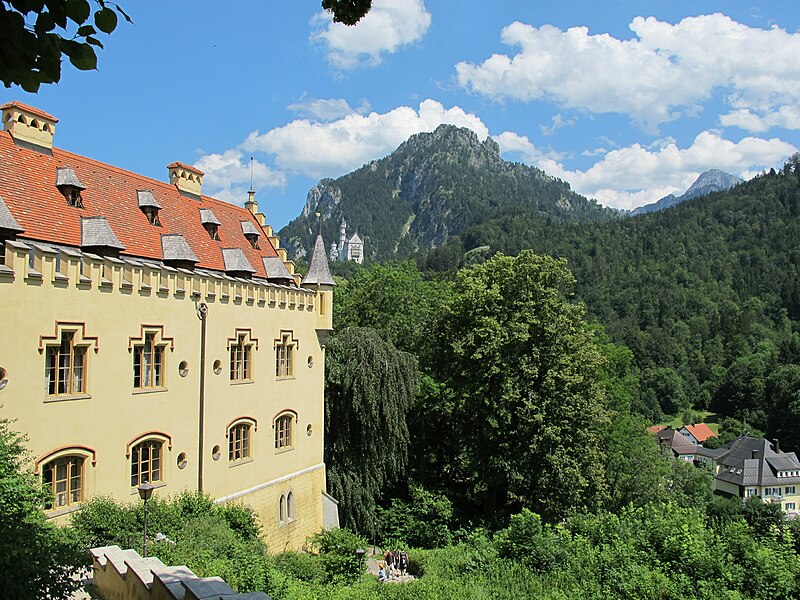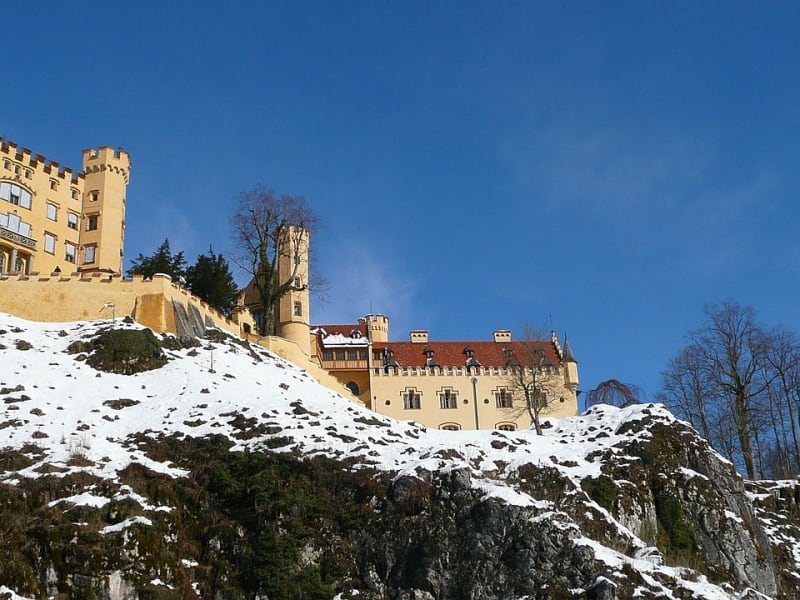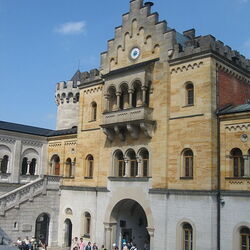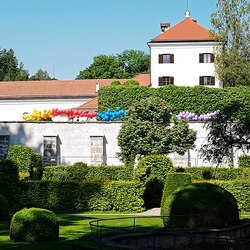Hohenschwangau Castle
Hohenschwangau is a magnificent castle located in Bavaria near the village of the same name. For many centuries, the Wittelsbach family, the Dukes of Bavaria, ruled here. Connoisseurs of beauty, they paid a lot of attention to art and construction.
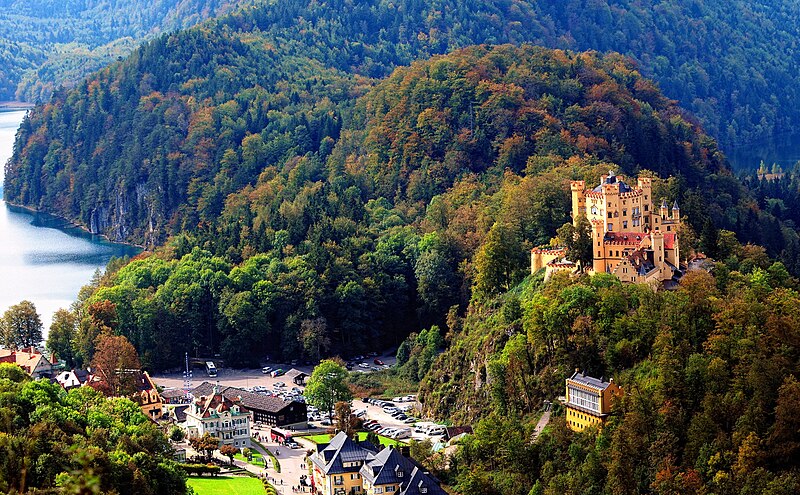
The history of Hohenschwangau Castle
The mountainous region of lakes and forests, the Schwangau Alps, the Swan Corner. The knights on the coat of arms had an image of a swan. Their castles and fortresses towered along the ancient Roman road Claudia - Augusta. In the 12th century, the Wittelsbachs built Hohenschwangau Castle between two mountain lakes, the Schwansee and the Alpsee. The legend of the knights, about their exploits and tournaments, has lived in these places for a long time. But unfortunately, by the 19th century, only the ruins of medieval castles and ancient traditions remained from the glorious times. But worthy heirs were found to restore the connection of the epochs and the rich past.
Hohenschwangau, with its crenellated towers, was built in 1832 by the Crown Prince, the future King of Bavaria, Maximilian II. Medieval style, huge gates, knight's coats of arms and symbols, this has not been built in Europe for a long time, the monarchs of the 19th century. If it hadn't been for Maximilian, there would still be forgotten ruins on this place. Hohenschwangau Castle was built in just four years, so the ideals of chivalry were returned to Swan Corner. The ideals of bravery, honor and nobility.
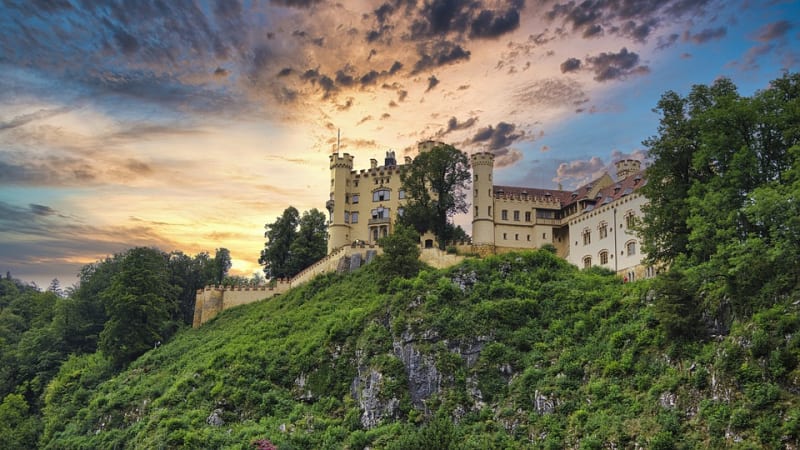
Hall of Heroes
The Hall of Heroes, the largest in Hohenschwangau Castle. The frescoes depict not only heroes of legend, but also real historical characters whose names have also become legendary. Henry the Lion, Duke of Saxony and Bavaria in the Middle Ages, is one of the most prominent figures next to the Emperor. There is a romantic battle scene, the main feature is that there is not a single drop of blood on it. The Knight and the Lady, another frequent plot in Hohenschwangau.
Ludwig is Maximilian's heir
In 1864, 18-year-old King Ludwig, a worthy successor of Maximilian, ascended to the Bavarian throne. The soul of the young king was nourished by legends and legends. When Ludwig was still a little boy, he first saw the swan knight Lohengrin, defender of justice, messenger of the Holy Grail, in the castle. After that, the knight's call will resound in Ludwig for the rest of his life.
Ludwig changed only his bedroom in Hohenschwangau Castle. Today, visitors to the castle marvel at the romantic tastes of the king. This fresco is based on the poem "Jerusalem Liberated" by the Italian poet Torquato Tasso. But she's not the main attraction of the room. Ludwig designed this starry sky so that oil lamps stood on the floor above, their light penetrated down through holes in the floor filled with crystal, and the starry sky twinkled overhead in the king's bedroom.
The moon lurked among the branches of the trees, their phases changed with the help of a round curtain. Ludwig usually slept during the day and stayed awake at night. The windows were heavily curtained and the room was filled with a starry night during the day.
A historic meeting
Ludwig and Richard Wagner met in the music room. The king's heart and the composer's heart beat in unison when it came to chivalrous ideals. Ludwig became the composer's patron from this meeting. On November 12, 1865, Wagner placed 10 military trumpeters on the castle towers, who at 7:00 a.m. performed the famous roll call from Ludwig's favorite opera, Lohengrin. Ludwig will perpetuate his name by building Neuschwanstein Castle opposite Hohenschwangau. It is also a famous tourist destination.
